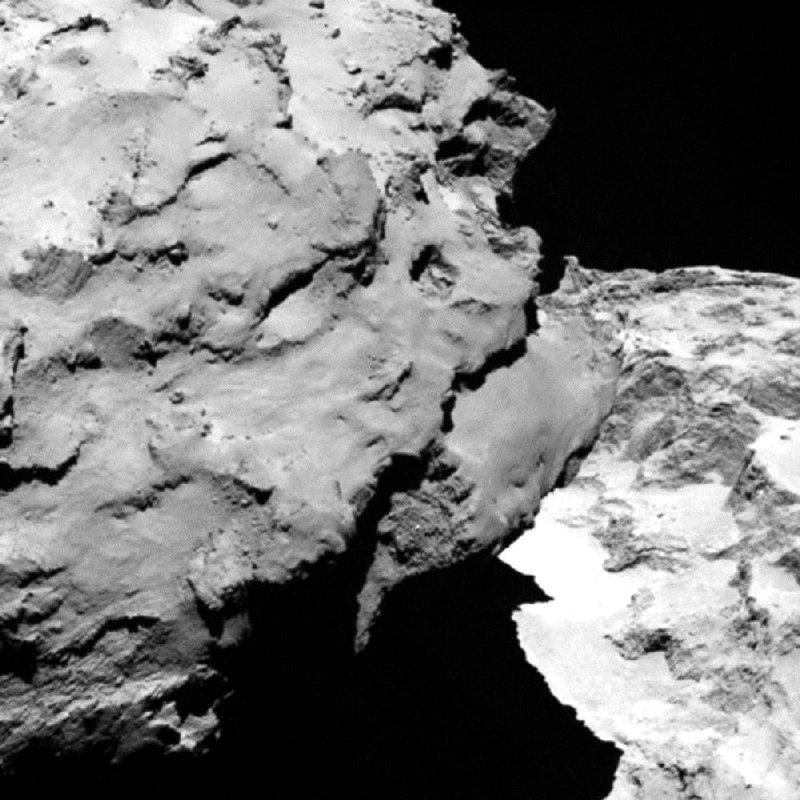DARMSTADT, Germany -- An unmanned probe swung alongside a comet Wednesday after a 4-billion-mile chase over the course of a decade.
Europe's Rosetta probe will orbit and study the giant ball of dust and ice as it hurtles toward the sun and, if all goes according to plan, drop a lander onto the comet in the coming months.
Rosetta turned up as planned for its "rendezvous" with comet 67P/Churyumov-Gerasimenko somewhere between the orbits of Mars and Jupiter.
The trip, launched March 2, 2004, marks a milestone in efforts to understand the mysterious shooting stars that periodically flash past Earth, and which have often been viewed with fear and trepidation.
Although the moon, Mars and even asteroids have been visited, no spacecraft has yet gotten so close to a comet. Having achieved this feat, Rosetta will go one step further and drop a lander on 67P's icy surface -- a maneuver planned for November.
"You can compare what we've done so far to finding a speck of dust in a big city," said Gerhard Schwehm, who was lead scientist on the Rosetta mission until his recent retirement.
To catch their quarry, scientists at the European Space Agency had to overcome a series of hurdles that included a last-minute change of destination -- after a carrier rocket failure delayed launch -- and a tense hibernation period of 31 months during which the probe was out of contact with ground stations.
Before Rosetta swung alongside 67P with a final thrust Wednesday, the spacecraft also had to accelerate to 34,000 mph -- a speed that required three loops around Earth and one around Mars.
Underlining the achievement, European Space Agency Director-General Jean-Jacques Dordain told scientists and spectators at the mission control center in Darmstadt, Germany: "This is your only chance to have a rendezvous with a comet."
Rosetta will now spend several months observing 67P from a safe distance of up to 60 miles. This will give scientists time to find a safe place to land Rosetta's sidekick, Philae.
The maneuver will pose an unprecedented challenge because there will be no second chance. Recent pictures of 67P show that its surface is porous, with steep cliffs and house-size boulders.
One person involved with Rosetta said the landing was "mission impossible," with only a slim chance of success. He spoke on condition of anonymity to avoid harming his employer.
Even if the landing fails, Rosetta will remain in the comet's orbit until at least the end of 2015, gathering reams of data with its 11 on-board sensors. As 67P gets closer to the sun, it will begin to fizz and release the cloud of dust and ice that most people associate with comets.
"We're going to have a ringside seat to see, for the first time, a comet turn into a comet, to develop its tail and explain what for centuries mankind has been puzzled by," said David Southwood, a former president of the Royal Astronomical Society who was involved with the Rosetta mission from the start.
Overall, scientists hope the $1.74 billion mission will help them learn more about the origins of comets, stars, planets and maybe even life on Earth, he said.
Mark McCaughrean, a senior scientific advisor at the European Space Agency, predicted plenty of surprises ahead.
"With this comet, every time we see a new image, the jaws drop," he said. "Everybody just can't believe how lucky we have been."
A Section on 08/07/2014

